
‘The return of a work of art or record to the country which created it enables a people to recover part of its
and identity and proves that the long dialogue between civilizations which shapes the history of the world is still continuing in an atmosphere of mutual respect between nations.’
Amadou-Mahtar M’Bow, former Director-General of UNESCO,1974-1987. A plea for the return of an irreplaceable cultural heritage to those who created it. (1)
Supporters of restitution of looted African artefacts will remember forever 10 November 2021. On this day, we saw an aircraft gently land at Cotonou Airport, bringing from Paris, France, from the Musée du Quai-Branly-Jacques Chirac the famous royal treasures that the French army under General Amédée Dodds had looted in 1892 from Abomey. The defeated King Béhanzin was sent to exile in Martinique.
Awaiting the arrival of the famous, mythic treasures were all the influential personalities; most of them had never seen the royal treasures that had been away in France since 1892. The traditional rulers were all there in their colourful and splendid robes, expecting to see their heritage. Among the distinguished guests were Bénédicte Savoy and Felwine Sarr, whose report had made possible the event that was about to take place.
As readers will recall, the Republic of Benin has been asking France for the restitution of treasures that the French colonial regime stole from Dahomey under French colonial hegemony. After the publication of the Sarr-Savoy report, France decided to return to the Republic of Benin 26 precious artefacts, including the royal treasures. (2)
On the streets of Cotonou, masses of people were awaiting the treasures from Paris. Traditional singers and dancers were already at the Palais de la Marine, where dignitaries and state officials were busy ensuring that the historical event went according to plan. The whole town was already full of people, singing and dancing, many shedding tears of joy, realizing they were about to witness a historic event almost miraculous. None had imagined that France would ever return any of the looted treasures. (3)
At 3.30 pm, 10 November, the cargo aircraft that left Bourget, Paris, landed at Cardinal Bernardin Cadjehoun Airport, Cotonou.
Special vehicles conveyed the treasures to the Palais de la Marina.
We must praise France and President Macron for having returned twenty-six artifacts to Benin. But what about the rest of the remaining 4074 artefacts that the Republic of Benin sought in December 2016? Why did France not return the statue of Gou, the god of iron and war? France must know that twenty-six out of five thousand do not even reach the pass mark.
At the signature of the agreement between France and Benin on November 9, 2021, President Talon indicated that he expected more returns from France and that restitution without the statue of Gou was not enough:
‘Mr. President, it is regrettable that this act of restitution, however appreciable, is not sufficient to give us complete satisfaction.
Indeed, how can you expect that with my departure with 26 works satisfaction would be complete, while the God Gou, emblematic work that represents the god of metals and metallurgy, the Fa tablet, mythical work of divination of the celebrated soothsayer Guèdègbé and a lot of other works, continue to be detained here in France to the great detriment of the actual owners? (4)
Germany has transferred ownership rights in 1130 Benin artefacts to Nigeria but has physically handed over only two objects to Nigeria. We expect more concrete transfers to Nigeria two. Germany’s performance so far is encouraging but not enough. Normally, two out of 1130 will not secure even a bare pass in an examination.
The Netherlands has declared its intention to restitute African artefacts, but they have yet to transfer any. There is room for improvement.
Belgium has returned only one object even though it has handed over to Congo a list of 84,000 artefacts in which ownership rights were transferred to the Democratic Republic of Congo.
The British Government and the British Museum refuse to consider changes in their hostile restitution policy. However, certain British institutions have physically returned Benin bronzes . What has been done needs to be improved, considering the one thousand Benin artefacts in the British Museum. The venerable museum has not moved with the other western museums on the restitution issue.
Many institutions and States act as if the quest for restitution of African artefacts can be limited or is limited to Benin bronzes. They do not talk about the other African artefacts looted during colonial domination. We must remind the West that Asante gold from Ghana stolen by the British in 1897 and now in the British Museum, Victoria and Albert Museum, and Wallace Collection have to be returned; so are various Ethiopian treasures looted from Maqdala in 1868, including the Christian crosses of the Ethiopian Orthodox Church as well as the thousands of manuscripts found in various universities and libraries in the West. How can a Christian country steal the Christian crosses of another Christian country and refuse to return them after two hundred years?
The bust of Nefertiti and the Rosetta Stone from Egypt must be returned. Many other Nigerian artefacts Ife, Ibo, Idoma, Nok, Urhobo, Mbembe and others are in Western museums. We have artefacts of other African peoples in former colonialist States: Asante, Bamileke, Bamun, Chokwe, Dan, Dogon, Fang, Fon, Kuba, Luba, Luo, Mangbetu, Pende and others.
In all the current discussions on restitution, many Western countries, such as Denmark, Italy, Norway, Portugal, Spain, and others have kept relatively silent as if they were not involved. States such as Denmark, Norway, and Sweden, were involved in colonial adventures. Portugal led the colonization of Africa. Countries such as Austria and Switzerland that did not directly have colonies in Africa but profited from the colonial situation, should come out clean and tell us what they are doing about the return of our ancestors and the restitution of our artefacts.
Many museums and States have spoken about ethics and morality concerning restitution. We wish to know whether this new wave of ethics is confined to Benin artefacts or whether it extends to other looted objects such as, Asante gold objects looted by the British army in Kumasi in 1874. (5) That army invaded Kumasi, the Asante capital, stole as much as they could find, and burnt the city before leaving.
On every Restitution Day, 10 November, we shall take stock of what has been done in the year to bring us nearer to achieving justice for the African peoples who have been deprived of their artefacts for more than a hundred years. We shall also examine whether Western States have done anything about returning the human remains of our forebears kept in their institutions. We want to bury our ancestors properly so we can retain the contact between the dead and the living intact. For many of us, the dead are not gone! When will the British return the human remains of the unfortunate little Prince Alemayehu of Ethiopia, whose father, Emperor Tewodros II, was driven to suicide at the sight of imminent capture by the British? The British took the little Prince to Britain, where he died, and buried him in Windsor Castle. We know with what pomp and care the British bury their royals. Why will they not allow the Ethiopians to do the same for little Prince Alemayehu, even after a hundred and fifty years? Where then, is the often-proclaimed care for children and love of children? (6)
How many other African human remains do the former colonialist and imperialist powers still hold in their institutions? How many human remains did France, Britain, Germany, Italy, Portugal, and other European colonialists collect from their many aggressive wars of colonization in Africa?
(7) We remember the various colonial wars that ended with the European assumption of control in Africa. What happened to the various Africans whose deaths the colonialists did not count? Mau war between Kenya Freedom Army and the British(1952-1960), the Maji war between German colonial authorities and Africans in East Africa(1905-1907), Battle of Adowa1896 between Italy and Ethiopia, are names of some of the conflicts our Continent has known through European aggression.
As we write, we have received a BBC News report that Cambridge University and London’s Natural History are cooperating with Zimbabwe to return human remains of anti-colonial heroes killed in 19th century anti-colonial struggles. (8)
Among these skulls would be that of the national hero Mbuya Nehanda who was executed by the British in March 1898 and her skull taken to Britain. Her statue stands prominently in the centre of Harare.
The history of the search by Myanka Sururu Mboro for the skull of Tanzania’s Mangi Meli is well-known. Mboro who studied Engineering in Berlin, has been searching for this lost skull for over forty years. He promised his grandmother when he was leaving Tanzanian in 1977 that he would recover the skull of Mangi Meli, a chief from his village whom the Germans decapitated in 1900 for his role in a rebellion against German colonial rule and sent to Germany.
Germany has returned some skulls to Namibia but there are still thousands of Namibian skulls in German institutions.(9) Felix Luschan, the famous ethnologist was an avid collector of human remains from the former German colonies of Cameroon, Rwanda, Tanzania, and Togo.
On this Restitution Day, we remember all those who fought for the restitution of looted African artefacts and human remains. We remember the Labour MP of Guyanese origin, Bernie Grant who kept the British Parliament and the
populace busy with his struggle on behalf of the Oba of Benin and the Benin
people. We also remember Prince Edun Akenzua, brother of Oba Erediauwa who represented the Oba and the Benin people in all discussions on the restitution of the Benin artefacts. The noble Prince presented to the British Parliament the Case for Benin, Appendix 21 by which he demanded the return of the three thousand and more objects looted in 1897. This quest still needs to be fulfilled. Bristol Museum promised to return Benin artefacts, but this has yet to be realized; the Prince left us in July 2022. A prominent legal scholar in the field of restitution was the late Nigerian Professor Folarin Shyllon whose writings in this area we still consul
On Restitution Day, we expect the Western museums that are holding our artefacts and ancestors to inform us about what they hold and their plans for restitution. Those institutions that expressed solidarity and sympathy for Black Lives Matter should demonstrate concretely that their expressions of sympathy are not empty words.
We are still waiting to hear from the British holders their plans for the restitution of the ivory hip mask of Queen-mother Idia from the British Museum to Nigeria. Or will Britain continue her monumental insult to all African peoples by her refusal even to lend the mask of Queen-mother Idia for the Pan-African cultural festival, FESTAC’77?
Rosetta Stone must leave the British Museum for Cairo as the Egyptians have been demanding for decades. The bust of Nefertiti does not belong to the Neues Museum, Berlin, Germany and must find her way to Cairo as requested by the Egyptian people and the dynamic Zahi Hawass.
On Restitution Day, we call on NGOs to intensify their efforts to support the restitution of looted African artefacts. We recall the decisive role played by non-governmental organizations such as Postkolonial Berlin and No Humboldt 21 in awakening the conscience of Germans to the injustice caused by the looting of the Benin bronzes and the subsequent illegal holding by the Völkerkunde Museum, Berlin, and the Humboldt Forum, Berlin. AFRIMUHERE and other NGOs are called upon to publicize their plans for public education about issues of restitution.
We encourage all organizations to take advantage of Restitution Day to contribute to the struggle to return our cultural property. The Western States should finally pay attention to the demands of the United Nations General Assembly resolutions on the Return of Cultural Property to their Countries of Origin. The utter disregard of the Assembly’s restitutions on this issue since 1973 may encourage others to disobey resolutions of the Assembly when considered inconvenient.
African children must learn about the stealing of our cultural achievements by those who allegedly were bringing civilization to Africa. In reality, they came to rob the Continent of its accomplishments and resources : aluminium, bauxite, cobalt, copper, diamond, gold, graphite, manganese, phosphates, uranium, titanium, timber, uranium, and zinc. Parents should make this clear to their children and also take them to the museums.
Every Restitution Day, 10 November, would allow us to assess how far we are getting closer to recovering our looted artefacts and our stolen ancestors. This day should also permit us to assess whether our ways and methods are efficient.
This is our time. Let us push on to recover our ancestors and our artefacts.
‘’Truth must be repeated constantly because error is being repeatedly preached round about all the time, and not just by a few, but by the masses. In the periodicals and encyclopaedias, in schools and universities, everywhere error prevails, being confident and comfortable in the feeling that it has the majority on its side.”
Johann Wolfgang von Goethe. (10)
NOTES
1. A plea for the return of an irreplaceable cultural heritage to those who created it. Amadou-Mahtar M’Bow’
https://unesdoc.unesco.org/ark:/48223/pf0000035390
https://translanth.hypotheses.org/585
2. Felwine Sarr and Bénédicte Savoy, The Restitution of African Cultural Heritage. Toward a New Relational Ethics,2018. https://drive.google.com/file/d/1jetudXp3vued-yA8gvRwGjH6QLOfss4-/view https://issuu.com/minusplato/docs/sarr_savoy_en-1K. Opoku, Further comments on Sarr-Savoy Report on Restitution
https://www.modernghana.com/news/912541/further-comments-on-sarr-savoy-report-on-restitution.html
3. Felwine Sarr and Bénédicte Savoy have described the historic nature of the event in a new book which has recently been published by the authorities of the Republic of Benin. Unfortunately, the texts are only available in French.
Felwine Sarr, ‘Les ancêtres repartent, les ancêtres reviennent’, p.129.
Bénédicte Savoy,’ De ‘mission impossible’ à ‘mission accomplie,’ p.131.
in Trésors royaux du Bénin, Art du Bénin d’hier et d’aujourd’hui, de la restitution à la révélation, 2022, Hermann Éditeurs, Paris. A companion publication deals with the relationships between the restituted art and contemporary art in the Benin Republic:
Art contemporain du Bénin, Art du Bénin d’hier et aujourd’hui, de la restitution à la révélation, Hermann Éditeurs.2022.
https://www.france24.com/en/tv-shows/across-africa/20220301-benin-restitution-dahomey
Art of Benin yesterday and today: from restitution to revelation. https://www.expoartbenin.bj/en/
Tears, dance as Benin welcomes back looted treasures from France Returning home https://www.globaltimes.cn/page/202111/1238738.shtml
Elation on the streets of Benin as France returns stolen bronze treasures
‘An emotional moment’ as Benin welcomes back looted treasures from France https://www.france24.com/en/africa/20211110-an-emotional-moment-as-benin-welcomes-back-looted-treasures-from-france
4. K. Opoku, Are we receiving the restitution we seek? https://www.modernghana.com/news/1123962/are-we-receiving-the-restitution-we-seek.html
5. Many museums and museum officials have referred to morality/ethics as grounds for restitution recently. Here are few examples:
Smithsonian:
“There is a growing understanding at the Smithsonian and in the world of museums generally that our possession of these collections carries with it certain ethical obligations to the places and people where the collections originated,” said Smithsonian Secretary Lonnie Bunch. “Among these obligations is to consider, using our contemporary moral norms, what should be in our collections and what should not. This new policy on ethical returns is an expression of our commitment to meet these obligations.”
Smithsonian Adopts Policy on Ethical Returns
May 3, 2022, News Release
https://www.si.edu/newsdesk/releases/smithsonian-adopts-policy-ethical-returns
Eve Salomon, Chair of the Trustees of the Horniman Museum:
‘The evidence is very clear that these objects were acquired through force, and external consultation supported our view that it is both moral and appropriate to return their ownership to Nigeria. The Horniman is pleased to be able to take this step and we look forward to working with the NCMM to secure longer term care for these precious artefacts Horniman to return ownership of Benin bronzes to Nigeria https://www.horniman.ac.uk/story/horniman-to-return-ownership-of-benin-bronzes-to-nigeria/
Lai Mohammed, Culture Minister of Nigeria:
‘They should learn from what has happened today and what happened in Germany,” Mohammed told the Guardian, recalling how British MPs told him the museum was bound by law not to deaccession items in its collection.
‘They used the law as a shield. This is not about law; this is about ethics.’
‘It’s about ethics’: Nigeria urges British Museum to follow US and repatriate bronzes
https://www.theguardian.com/world/2022/oct/11/nigeria-benin-repatriate-bronzes-smithsonian
6. K. Opoku, To decolonize is to decontextualize, Tristram Hunt. Should we stop asking for restitution of our looted artefacts ?
7. Skulls and bones: German colonialism's dark secret
https://www.dw.com/en/skulls-and-bones-a-dark-secret-of-german-colonialism/a-43279594
What is in a name? https://www.dw.com/en/battle-over-colonial-era-street-names-in-berlin/a-19136108
8. London's Natural History Museum and University of Cambridge are set to return warrior skulls
https://www.telegraph.co.uk/news/2022/10/30/british-museums-agree-return-warrior-skulls-taken-trophies-zimbabwe/ UK: London museum and Cambridge University say willing to return skulls to Zimbabwe; but no record of Nehanda remainshttps://www.newzimbabwe.com/uk-london-museum-and-cambridge-university-willing-to-return-skulls-to-zimbabwe-but-no-record-of-nehanda-remains/
9. K. Opoku, Return of stolen skulls by Germany to Namibia: Closure of a horrible chapter?
10. “ Und denn, man muss das Wahre immer wiederholen, weil auch der Irrtum um uns her immer wieder gepredigt wird, und zwar nicht von einzelnen, sondern von der Masse. In Zeitungen und Enzyklopädien, auf Schulen und Universitäten, überall ist der Irrtum oben auf, und es ist ihm wohl und behaglich, im Gefühl der Majorität, die auf seiner Seite ist.‘ Goethe am 16.Dezember 1828
Johann Peter Eckermann, Gespräche mit Goethe in den letzten Jahren Seines Lebens, Seite 311, Reclams Universal Bibliothek, NR.2002, Stuttgart, 2006
IMAGES FOR RESTITUTION DAY,10 NOVEMBER.
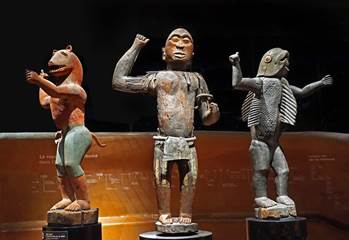
Royal statues, Dahomey, Republic of Benin, previously in Musée du Quai Branly, Paris, that France returned to the Republic of Benin. Left, King Glélé, half-lion, half-man. Centre, King Ghézo, half-bird, half-man. Right, King Béhanzin, half-shark, half-man. All three statues were produced by Sossa Dede, Benin.
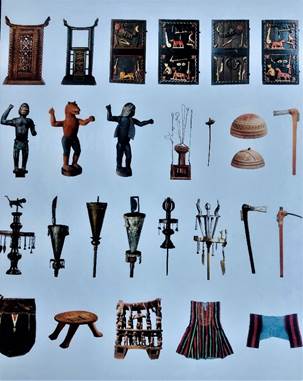
From Tresors royaux du Bénin
Twenty-six artefacts restituted from Musée du Quai Branly-Jacques Chirac, Paris, France.

Asen of Behanzin, one of the twenty-six artefacts returned by France.
Asen is a reliquary altar, linking the living and the departed. The asen would normally be made on the death of the ancestor. How could this asen dedicated to King Béhanzin, from the Dodds Collection, have been |in the Abomey Palace during the attack by the French troops whilst Béhanzin was still alive? Trésors royaux, p.103.
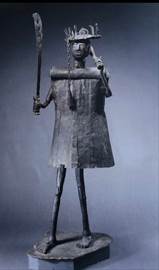
Gou, God of Iron and of War
Produced by the artist Akati Ekplékendo, around 1858. The sculpture of Gou, God of iron and of war that the French looted in 1892 from the former French colony, Dahomey, was not among the twenty-six objects that France returned to the Republic of Benin on 10 November 2021. Benin once again requested restitution of Gou during Macron’s recent visit in 2022 to Republic of Benin.

Crown of Tewodros II, Ethiopia, the Victoria and Albert Museum, London, United Kingdom. Looted during the invasion of Magdala in 1868 by a British Punitive Expedition army. The crown is labelled at the Victoria and Albert as the "Crown of the Archbishop Abune Selam.” With typical colonialist and imperialist arrogance, this 18-karat gold crown was described as
“barbaric” but still kept by the British.

 |
Prince Alemayehu as photographed by Julia Margret Cameron at the Isle of Wight in 1868
When will Britain return the human remains of Prince Alemayehu son of Emperor Tewodros II, stolen along with Ethiopian and tabots, brought to England at 7 and who died at 18 and was buried in St George’s Chapel, Windsor Castle. The Ethiopians have been requesting in vain since 2007 his human remains so that he could be buried properly in accordance with Ethiopian traditions. Elizabeth Blunt, Ethiopia Seeks prince is remains http://news.bbc.co.uk/2/hi/africa/6716921.stm

Gold mask, 20 cm in height, weighing 1.36 kg. of pure gold, seized by the British from Kumasi, Ghana, in 1874 and now in the Wallace Collection, London, United Kingdom.
 |

Bernie Grant, Labour Member of the British Parliament, from 1987 to his death in 2000. Benin Bronzes Campaign Fi les - The Bernie Grant Archive
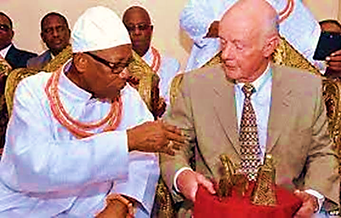
Dr. Mark Walker and late Prince Edun Akenzua in 2014 restitution ceremony.
Peju Layiwola, Walker and the Restitution of Two Benin Bronzes, https://www.premiumtimesng.com/entertainment/165632-walker-and-the-restitution-of-two-benin-bronzes-by-peju-layiwola.html
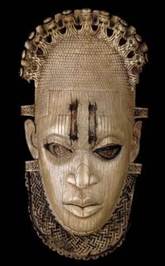
Ivory-hip mask, Queen-Mother Idia, Benin Nigeria, now in British Museum, London, United Kingdom. Will she finally return home to Benin, Nigeria, from her imprisonment in London Museum? As we write, we have received information that the other Queen-mother mask that Sotheby’s was prevented from auctioning in 2011 had been eventually sold to Qatar. See https://www.theartnewspaper.com/2022/11/04/qatari-sheikhs-rare-ivory-mask-stolen-from-benin-city-by-the-british-is-one-of-five-on-public-displaynone-in-nigeria
See also K. Opoku, Reflections on the abortive Queen-Mother Idia mask auction: Tactical withdrawal or decision of principle?https://www.modernghana.com/news/310582/reflections-on-the-abortive-queen-mother-idia-mask-auction.html
K. Opoku, They are selling Queen-Mother Idia mask and we are quiet
K. Opoku, Once in the British Museum, always in the British Museum: Is the deaccession policy of the British Museum a farce? https://www.yumpu.com/en/document/read/28034323/dr-kwame-opoku-analysis-of-british-museum-de-accession-ligali
Folarin Olawale Shyllon, July 23, 1940-January 13, 2021. 00249.pdf (unesco.org)https://gazettengr.com/wp-content/uploads/Folarin-Shyllon.jpg
History is on our side https://boasblogs.org/dcntr/history-is-on-our-side/
African Voices in Restitution https://openrestitution.africa/africanvoicesinrestitution/
See Jos van Beurden, Treasures in Trusted hands. 2017
https://www.sidestone.com/books/treasures-in-trusted-hands

Statue of anti-colonial heroine Mbuya Nenhanda in Harare, Zimbabwe.




Kota in Musée du quai Branly- JacquesChirac,Paris,France.
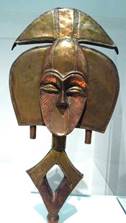
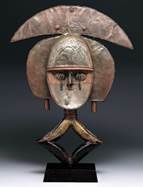
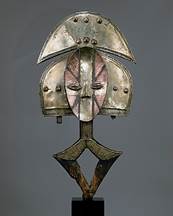
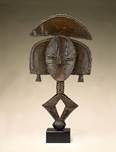
Art Institute of Chicago. Dallas Museum of Art. Metropolitan Museum of Art. Smithsonian.
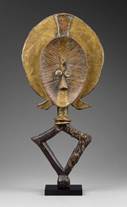
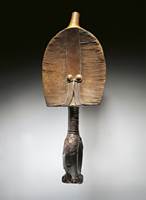

MFA,Boston. Ethnologisches Museum,Berlin. British Museum.
Why are there so many kota and other African reliquary figures in Western museums? Do Westerners have a need to communicate with our African ancestors,mostly killed in the colonial period?It seems probable that the determination to destroy African religion impelled the colonizers to destroy anything that had to do with reverence,rituals, diivination and the world of ancestors. In so doing they interupted many traditions relating to healing, protection and medicine in our societies. One can imagine the ensuing social disruption,confusion and opportunities for charlatans to pray on the weakness of the societies generally. How much has this contributed to the confusion of values during colonization and after Independence?





 There’s nothing you can do for us; just give us electricity to save our collapsi...
There’s nothing you can do for us; just give us electricity to save our collapsi...
 Ghanaian media failing in watchdog duties — Sulemana Braimah
Ghanaian media failing in watchdog duties — Sulemana Braimah
 On any scale, Mahama can't match Bawumia — NPP Youth Organiser
On any scale, Mahama can't match Bawumia — NPP Youth Organiser
 Never tag me as an NPP pastor; I'm 'pained' the 'Akyem Mafia' are still in charg...
Never tag me as an NPP pastor; I'm 'pained' the 'Akyem Mafia' are still in charg...
 Your refusal to dedicate a project to Atta Mills means you never loved him — Kok...
Your refusal to dedicate a project to Atta Mills means you never loved him — Kok...
 2024 elections: I'm competent, not just a dreamer; vote for me — Alan
2024 elections: I'm competent, not just a dreamer; vote for me — Alan
 2024 elections: Forget NPP, NDC; I've the Holy Spirit backing me and nothing wil...
2024 elections: Forget NPP, NDC; I've the Holy Spirit backing me and nothing wil...
 2024 elections: We've no trust in judiciary; we'll ensure ballots are well secur...
2024 elections: We've no trust in judiciary; we'll ensure ballots are well secur...
 Performance tracker: Fire MCEs, DCEs who document Mahama's projects; they're not...
Performance tracker: Fire MCEs, DCEs who document Mahama's projects; they're not...
 Train crash: Railway ministry shares footage of incident
Train crash: Railway ministry shares footage of incident
